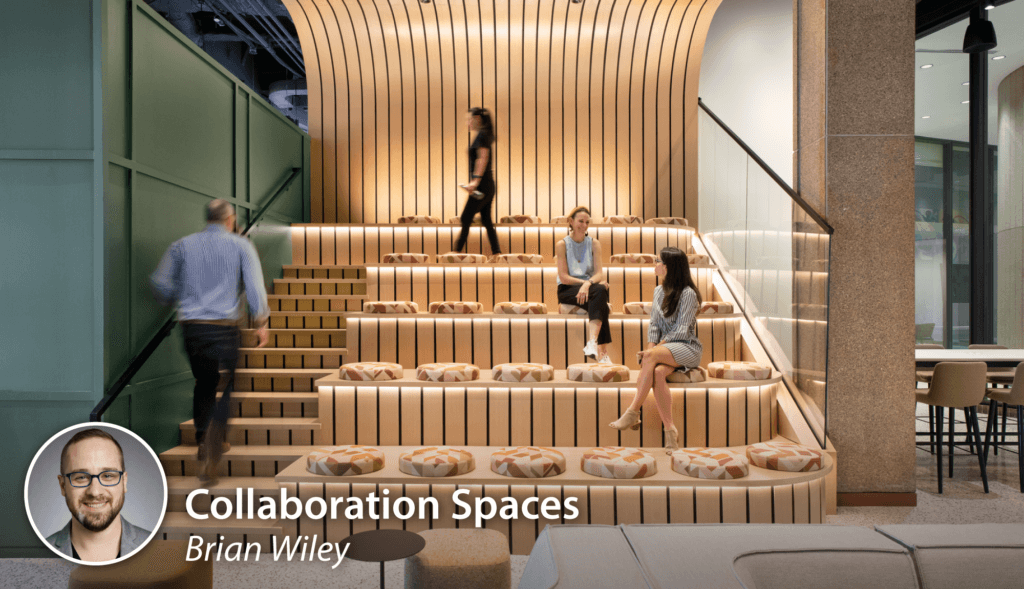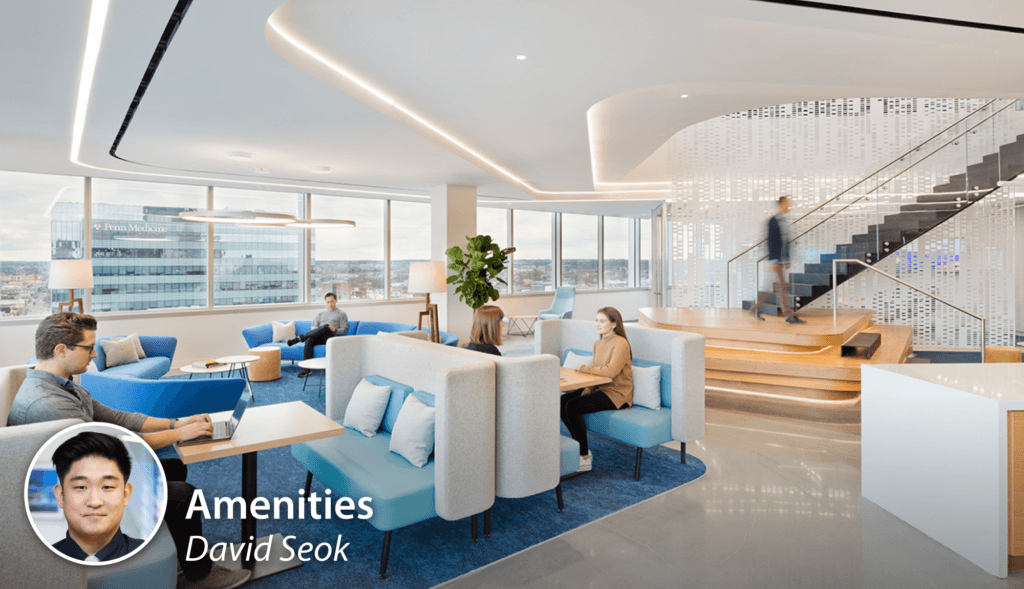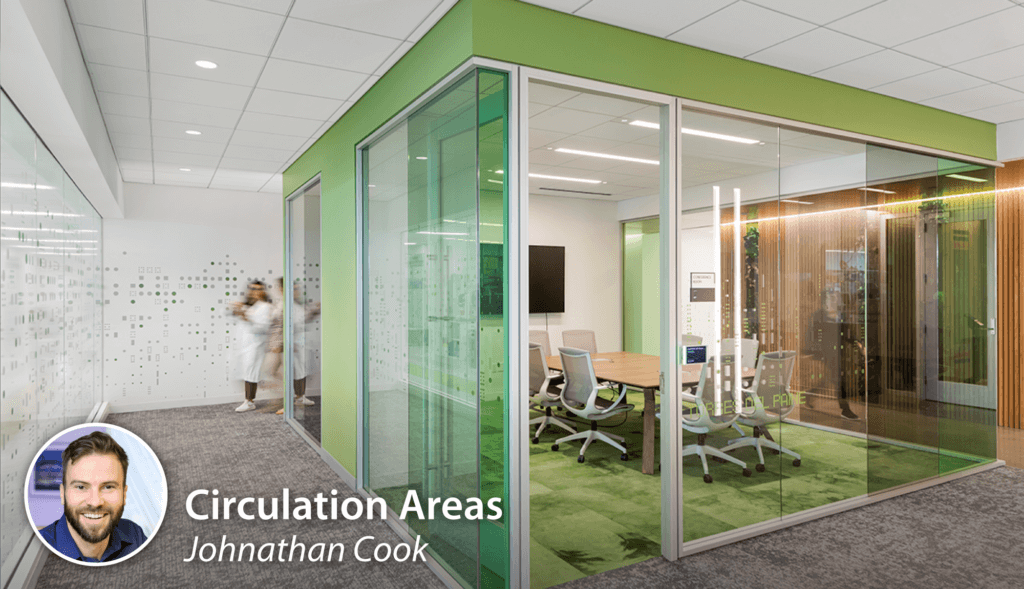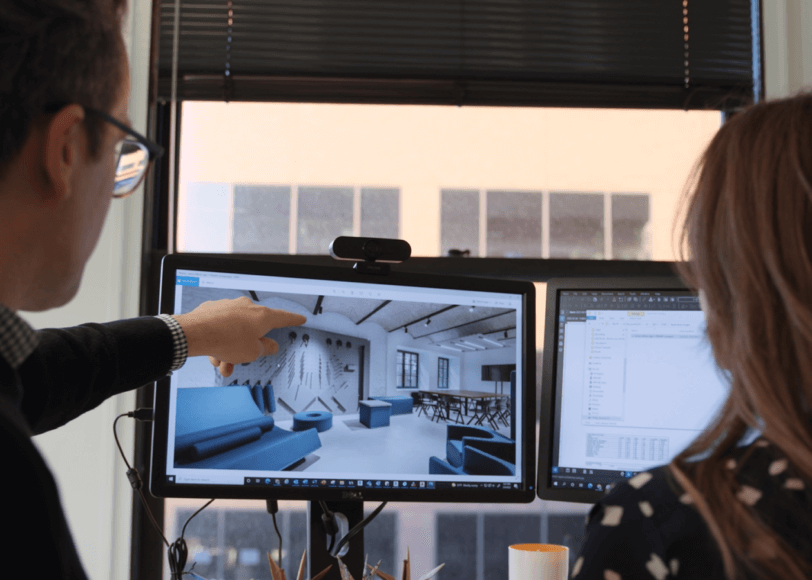Corporate environments designed to enhance the users’ experience have many benefits including worker comfort, space functionality, task efficiency, and most importantly overall increased enjoyment. For many companies, the future of work is still hybrid. Architects and interior designers are working alongside their clients and consultants to design spaces that workers want to return to. New and reimagined offices are providing a more hospitality-like feel that supports different types of collaborative and independent work tasks with a variety of designated spaces. Lighting is essential to elevating the perception and experience of these spaces.
It is important to break away from the monotony, creating special moments at the office that are engaging without being distracting.
The Lighting Practice’s Senior Lighting Designers share their design expertise and tips for illuminating different space types found in the corporate environment.

The Buccini/Pollin Group – Wilmington, DE (Gensler)
“Collaboration spaces are unique because they are generally designed to have a higher level of finish and architecture compared to typical open office environments”, says Brian Wiley, “I love lighting architectural surfaces and allowing reflected light to provide the functional light of the space. You can do this by lighting feature finished walls or a ceiling. In a collaboration space, this helps to make the space feel open and more bright”.

Amicus Therapeutics – Philadelphia, PA (CRB)
“Working from home, people have complete control of their working environments and how they break up their day, now they want that capability when they come into the office”, explains David Seok. “Amenity spaces like fitness centers, rooftop lounges, and game rooms can offer employees a respite from their workspaces, like at home. As a result, these are the spaces where a designer can be more creative. I like looking for beautiful statement lighting pieces for amenity spaces”.

Mindspace – Philadelphia, PA (Tantillo Architecture)
“Focus spaces are designed to be a respite from the distracting and noisy activity experienced in an open office setting’, explains Eve Quellman, Senior Lighting Designer at The Lighting Practice. “Implementation of a lighting design that supports the quiet, calm and uninterrupted nature of these types of spaces is key”.
Focus spaces need to provide functional task lighting, but there is also an opportunity to incorporate fun, decorative elements.
“In a focus area or booth, I love to graze a feature wall and maybe add a ‘cute little sconce’ or a desk lamp”, says Eve. “To support efficient work, soft and properly concealed light sources work best in these small spaces and help to calm the nerves, focus the mind, and minimize distractions”.

Confidential Corporate Client – Conshohocken, PA (Gensler)
“Every conference space these days needs to provide video conferencing capabilities! Providing a light quality that will minimize shadows and render people clearly on video is important”, says Caitlin Bucari. “Additionally, incorporating layers of light supports this multi-functional space. One layer should provide bright, even levels of ambient light across the space, then another to focus lights for low-level task lighting, and then the walls for presentation pin-ups/whiteboards or to highlight artwork”.

CRISPR Therapeutics R&D Headquarters– Boston, MA (Jacobs)
“A goal for designing lighting for circulation areas is to aid the occupants with wayfinding and create movement in the space”, expresses Johnathan Cook, “Considering the adjacent office spaces and their intended use, lower light levels can work well for corridors and circulations areas, because there are usually no tasks being performed”.
Lighting can positively impact perception making closed corridors or narrow walkways feel more open while inspiring movement.
“Indirect perimeter lighting can highlight the walls and/or ceiling to help those tight corridors feel bigger and more open”, explains Johnathan. “Creating a relaxed soft atmosphere where you can gather your thoughts and get the blood flowing again is my personal goal for circulation spaces”.

Citizens Bank – Philadelphia, PA (Bohlin Cywinski Jackson)
“Aside from providing adequate light levels on the task surface, a private office offers a great opportunity to use lighting to accent an element, like art or another decorative piece important to the space user”, says Tammy Wu. “Unlike an open office space, in a private office, you can use fixtures like floor lamps, which would add a warm, more home-like tone to the space”.

CRISPR Therapeutics R&D Headquarters – Boston, MA (Jacobs)
“In an open office space, I like to use direct/indirect linear pendants, which helps to open up a space, making it feel less oppressive, as well as getting the full benefit of daylight”, explains Chris Hallenbeck. “Ensuring a proper lighting control system is installed and commissioned properly to take into account daylight, occupancy, and the user’s visual comfort is vital. These systems can give the owner reporting and feedback on space usage and energy consumption”.





